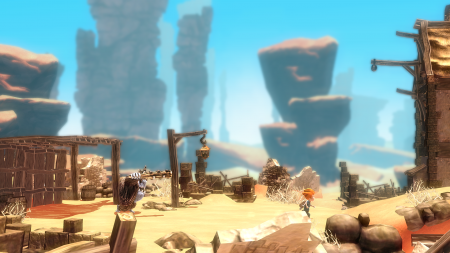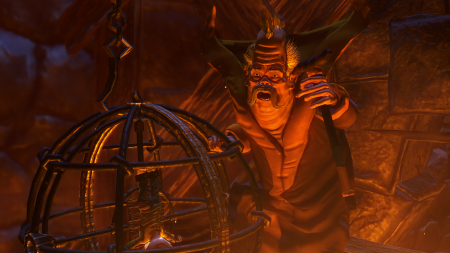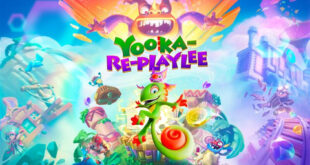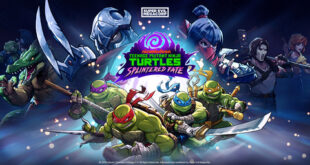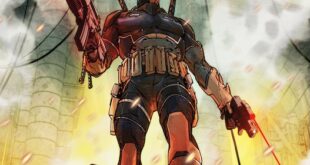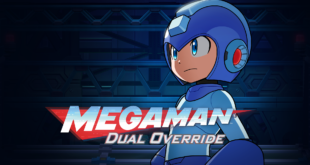Press Play’s game about a boy and his marker comes to Xbox One in fine form. Get ready to doodle with nature.
Who wouldn’t like the ability to warp the very fabric of the world around them? This kind of ability has been one of the mainstays in simulation genre’s for years with games like Populous and the way that you can change the actual landscape under your feet. I don’t think however, that it’s ever been done in a platformer.
Max: The Curse of Brotherhood adapts this mechanic very well though and (minor quibbles aside) to pretty fantastic effect throughout. Despite my constant urge to call it one, dubbing Max a platformer might be a little bit of a deceptive label, because the game is every bit a puzzler as it is a representation of the classic platform genre.
Much like both genres listed above though, Max: The Curse of Brotherhood isn’t really all that concerned with story and narrative. That’s not to say that there isn’t one present, it’s just that it isn’t the most important thing in the world and takes a decided back seat to the gameplay- which isn’t all bad.
When Max: The Curse of Brotherhood starts up, we find Max (the player character) coming home from a day at school. All the little guy wants to do is relax and maybe spend some time on his computer; that’s not in the cards though as he finds his little bro Felix camped out in his room, playing with his toys.
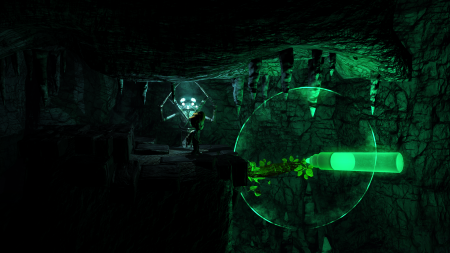 Max has enough when an errant plane hits him in the head and looks up a magic spell on his PC to help him ditch his brother for good. And unlike whenever anyone reading this may have tried something even remotely like that in the past, this spell actually works. A monstrous beastie reaches through a portal into the kids home and snatches Felix up, but before it closes big bro Max leaps through too. I guess he was afraid he’d get in trouble for sending his brother through a magic rip in space to an alien world. Probably a valid concern.
Max has enough when an errant plane hits him in the head and looks up a magic spell on his PC to help him ditch his brother for good. And unlike whenever anyone reading this may have tried something even remotely like that in the past, this spell actually works. A monstrous beastie reaches through a portal into the kids home and snatches Felix up, but before it closes big bro Max leaps through too. I guess he was afraid he’d get in trouble for sending his brother through a magic rip in space to an alien world. Probably a valid concern.
There’s more to the story than that of course, but not a ton. Most of it is told through the actual gameplay with little in the way of cutscenes, though there are a few. I actually like that aesthetic quite a bit as it’s kind of of an old school way of designing which is something I can get behind.
Going back to what I mentioned above, one thing that continually threw me off during play is the basic nature of Max: The Curse of Brotherhood. And by that I mean the controls themselves and their split-personality. For starters, Max looks like a fairly straight forward platformer, but as I mentioned that’s far from the truth.
While you can jump and run around in the bizarre world Max and his brother are trapped in, you can’t actually engage any of the game’s enemies. Orc-like baddies, snails with shooting spikes and several other creepy crawlers are all but invincible to Max as he can’t fight them directly. And this is where the puzzle aspects come in.
Most of the more complex enemy encounters in the game (not to mention the environmental hazards) become puzzles that you must solve to move on. None of them are really killers in terms of halting the game and most can be solved in just a few minutes or less, so don’t worry about anything tedious here, but it nonetheless does act as a kind of ‘speed bump’ as you’re exploring the landscape.
Here’s how the game’s big hook works: Max can use his marker to actually ‘draw’ in the world. Spots will pop up from time to time in the game’s stages that are capable of interaction with this extremely magic marker. Max can raise up sections of ground, create water luges (my favorite) and more just with a few button presses. All of the special spots are automatic too, so you don’t have to worry about selecting which element to create as they’re all pre-ordained- you just have to figure out how to use them all together.
If it sounds like a cool idea, it is; and if it sounds like it’s fun, well, it’s that too. I really don’t want to give you the impression that I’m complaining about having a deeper gameplay mechanic than just having Max be a run of the mill platform game in the mold of Super Mario or Sonic, because I’m not. It’s just that the world that Press Play has built here is so neat and enjoyable to play through that sometimes it gets a little annoying to have to stop Max’ journey in order to solve a puzzle.
And when I talk about Press Play’s Max: The Curse of Brotherhood universe, I can unequivocally say that it’s really quite beautiful. Through caves and bogs and everything else, this is one gorgeous adventure. The color palate is huge and deep with varied landscapes and plenty to please the eye. While we’re on the topic of presentation, Max sounds great too although I will say that the music is somewhat nonexistent and really doesn’t make an impact at all. The voice-work is terrific though, and that includes the main character and the villainous Mustacho (who’s actually more comical than scary).
Final Thoughts
All in all, Max: The Curse of Brotherhood is a really fun time with lots to keep fans of both puzzle games and platformers alike busy.
It’s a true melding of the genres, where you really can’t go anywhere in its universe without running into one element or the other, and if masterfully crafted in that way. I should note too that Max (as a game) definitely moves along at a decent clip, so if you lean more towards the platform direction than the puzzle one (like me), you should still feel right at home in this one- if momentarily forced to use your noggin instead of your thumbs from time to time.
If you’re completely uninterested in platformers or puzzle games (or both), then you might want to keep your distance, but for most gamers Max: The Curse of Brotherhood presents both a darn good time and something new to boot. Imagine that.
 BrutalGamer Bringing you Brutally Honest feedback from today's entertainment industry.
BrutalGamer Bringing you Brutally Honest feedback from today's entertainment industry.

